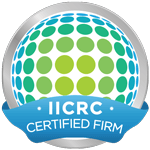Leaky bathroom fixtures, grey water, black water, burst pipes, and groundwater are major causes of water damage emergencies, which affects up to 14,000 people across the country every day. If you don't act fast, a flood can cause extensive damage to drywall, floors, ceilings, roofs, and basements, and the repair costs can add up quickly.
Here's what to do within the first few hours of a flood to prevent further damage to your home.
1. Stop Additional Damage
Look for any damages to your home's structure to avoid additional risks. Before entering the house, check for signs such as cracks, warping, holes in the wall, and damage to the home's foundation. Turn off the water as well as the main power connections even if you don't have power.
Call your utility company if there are signs of damage to the sewer, water, electric, or gas systems.
2. Prevent Contamination
Floods increase the risk of sewage and chemical contamination. Avoid using your bare hands to remove items from the flood scene. Instead, wear protective gear such as rubber gloves, full coverage boots, and waders as a precaution against health hazards. Also, don't consume food left in a flooded house and boil your drinking water to avoid contaminants.
3. Document
Take pictures and videos of the flood damage before having any restoration and repair work done to your home. Your insurance company will require evidence of the damage to determine your coverage payout.
4. Notify Your Insurance Company
Get in touch with your insurance agent immediately. Inform them about the extent of the damage to your home and the repairs that you require. As much as you would want to see your house back to its original state, avoid making repairs if your insurance agent has recommended that you wait for an adjuster to assess the extent of damage to your home.
Most home insurance policies only cover water damage if it is caused by a covered event, which is why a claims adjuster will thoroughly investigate the damage. Cooperate with your insurance company to identify the cause of the flood and the amount of coverage you qualify for.
5. Mitigate Mold Damage
Get rid of water-soaked items such as mattresses, clothes, and carpets as soon as possible to prevent mold. Take photos of high-value items before extracting them from the flood scene to ensure that you receive appropriate coverage.
Prevent further damage to the walls by carefully poking holes in the drywall to let water out. You should also make a note of any damage to the walls, as this may have a significant impact on your home insurance claim.
Mold can develop within 24 to 48 hours after a flood. Call your local damage restoration contractor as soon as possible to prevent mold damage. Choose a reliable company that is certified by a reputable professional organization, such as the Institute of Inspection, Cleaning, and Restoration.
A certified contractor will know exactly what they are doing, which will help ensure that the damage is reversed quickly and correctly. However, you should be prepared to wait up to six months for your home to get back to normal depending on the extent of the water damage.
Waking up to a flooded home is understandably distressing. A sump pump and wet vacuum might get the job done if you are cleaning up a minor leak or flood, but even with those tools, the cleaning can take hours and predispose your house to extensive damage. Avoid hidden hazards by seeking help from a professional restoration company as soon as possible.
Contact ANR Restoration Inc. for an initial assessment of flood damages and professional cleaning and restoration services.?


